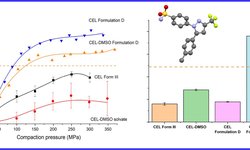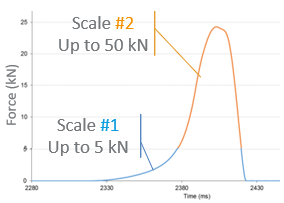Scientific papers
Capping and lamination are prevalent issues in the pharmaceutical tablet manufacturing process. Although these problems are often addressed collectively, they represent distinct failure patterns in tablets and consequently involve different mechanisms of cracking. This study focuses on the specific case of lamination in biconvex tablets, characterized by a fracture into two parts along a failure plane perpendicular to the compression direction, typically situated near the center of the tablet band.
Finite element method simulations were employed to suggest that this type of failure is promoted by localized tensile stresses at the tablet's center, induced by residual die wall pressure and the tablet's shape. Additionally, these stresses are exacerbated by a narrow band thickness. Experimental findings confirmed these hypotheses and revealed that high compaction pressure contributes to the propensity for this form of lamination.
Since the crack originates at the tablet's center, it may not extend to the tablet band, making the failure difficult to detect through external visual examination. X-ray tomography was utilized to observe central cracks inside the tablet without actual tablet breakage. The presence of such cracks inside the tablet should be considered during tablet development, as they might remain undetected immediately after compression but could lead to tablet failure during subsequent post-compaction events.
Comments
No comments posted yet.
Add a comment















